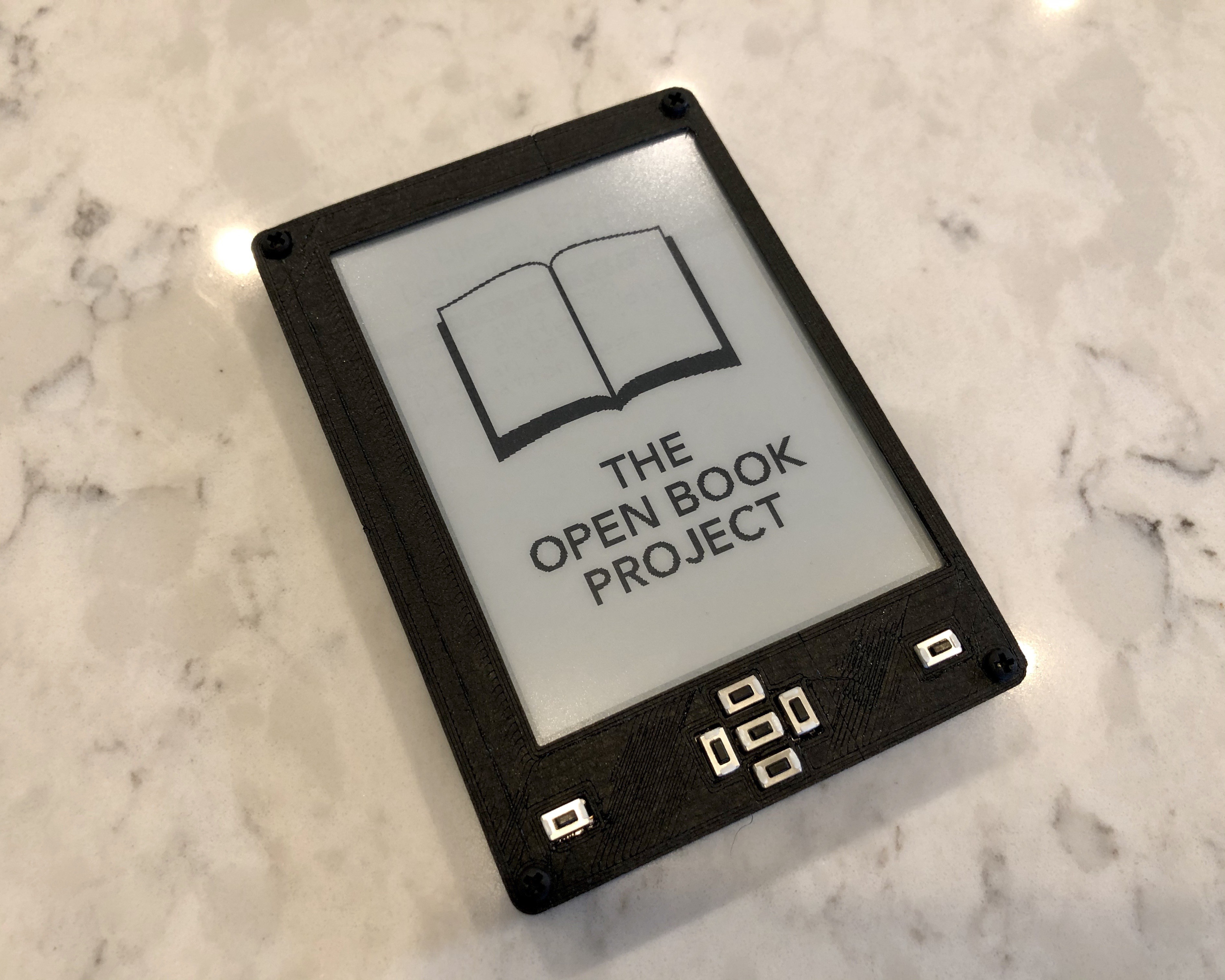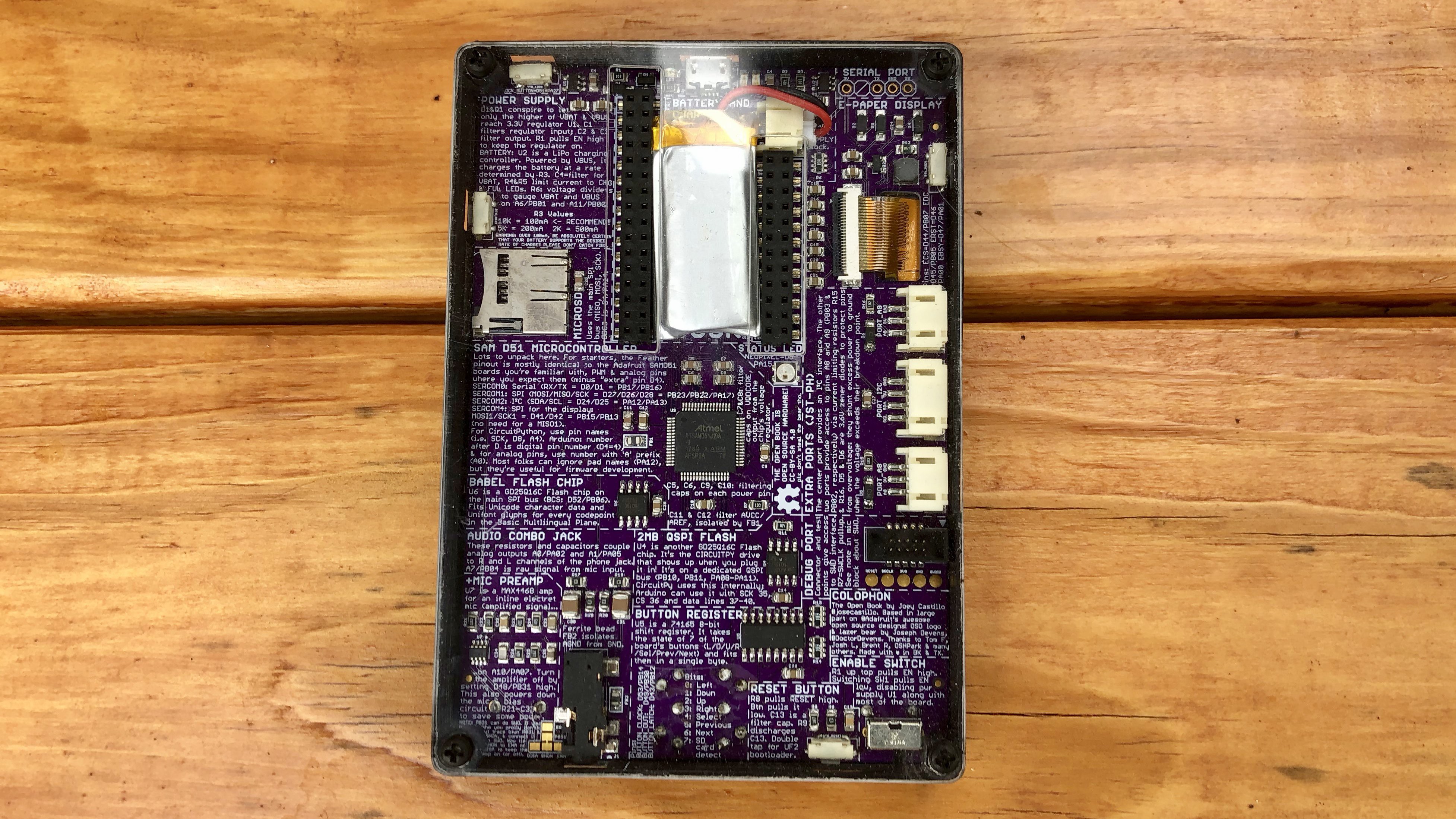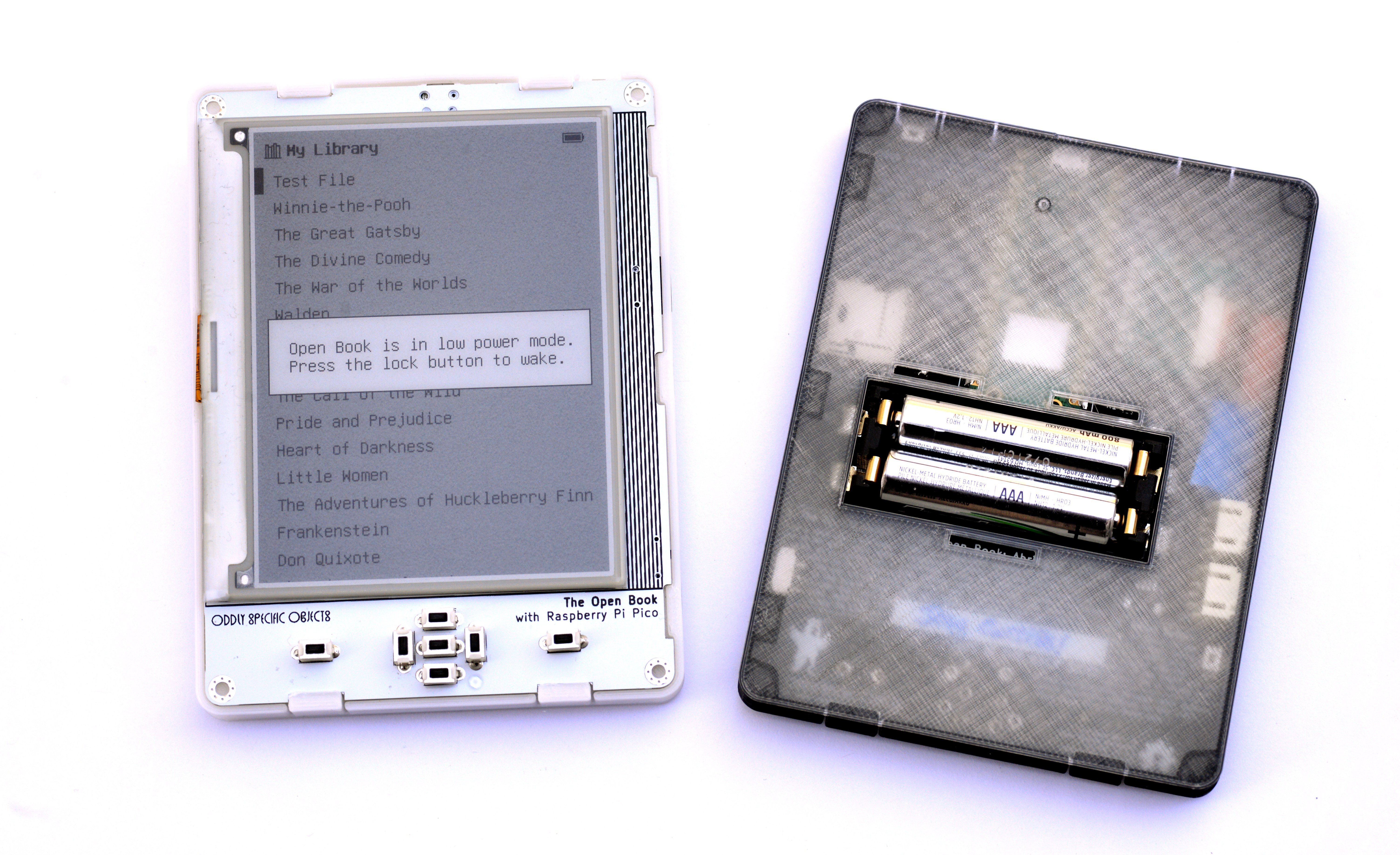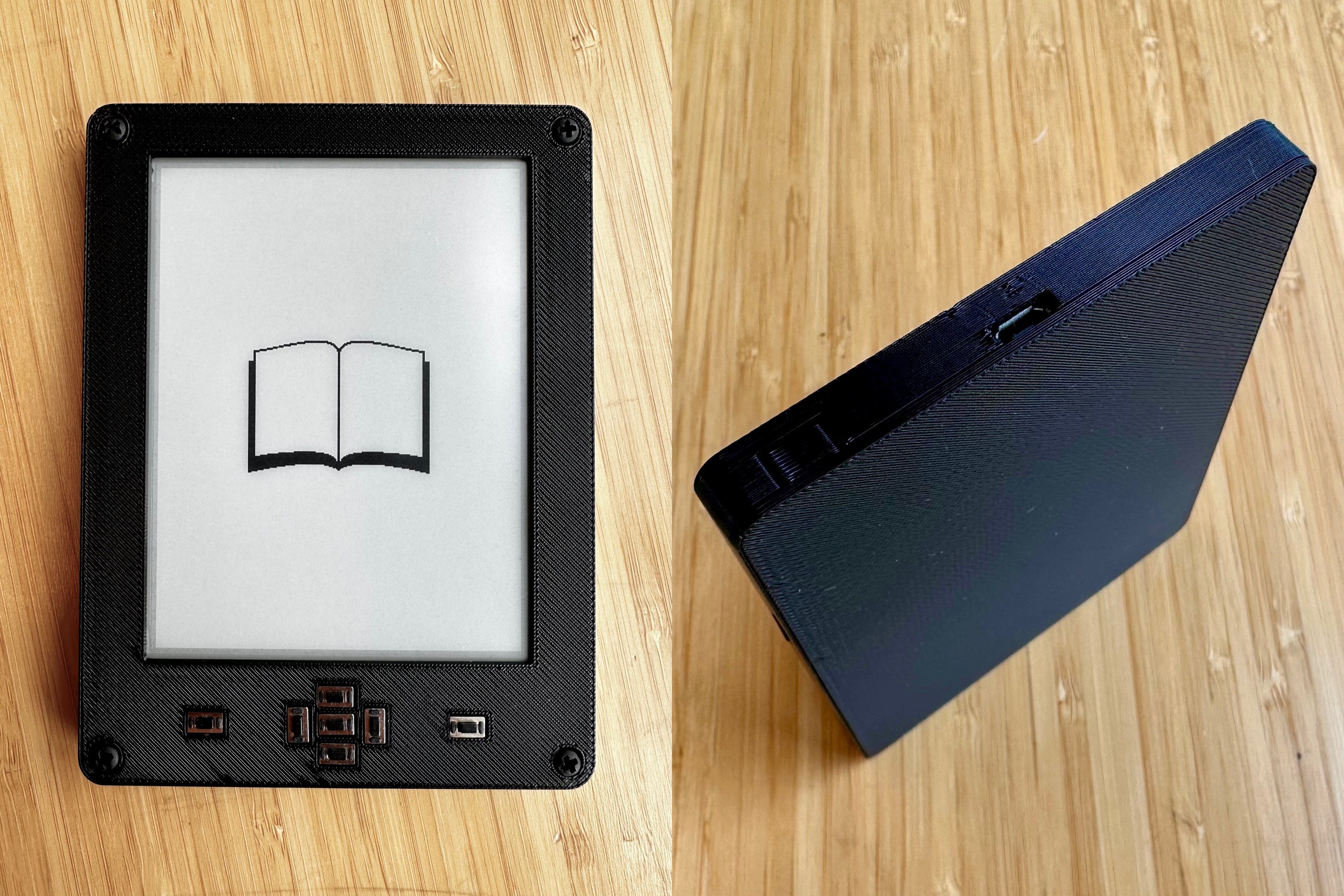NOTE: This project log was originally posted on 07/27/2023 at 18:51 EDT, but due to a misunderstanding, it had to be deleted and remade.
One key requirement for the Open Book has never changed: I want it to be portable. I mean, it has to be, right? You want to toss it in your purse to read on the subway, and that means that it has to be battery-powered and self-contained. As this requirement goes, the original Open Book actually looked OK at a glance:

But if you look just a little closer, it becomes clear how it failed on both of these metrics.

Let’s take battery power first: when I was laying out that manic Dr. Bronner’s style circuit board, I wasn’t thinking about where a battery would fit. As a result, we were limited to placing a battery in the one spot without any components on it: the area between the Feather headers. Luckily there is a 400 mAh battery that fits there. But let’s face it: 400 mAh is not a lot of juice. Also, putting the battery on top made the device feel a bit top heavy, which is not a great hand feel.
Then there’s the issue of an enclosure, and the fact that the fit and finish wasn’t great. You can see big holes for the USB port and the lock button, as well as holes for plugging in a FeatherWing — not a ton of ingress protection. The enclosure also wasn’t as thin as I’d hoped it could be: that 400 mAh battery only manages to pack as much power as it does by being 8 millimeters tall, which makes it the thickest object on the board, and all but ensures that the device will be more than a centimeter thick when placed in its housing.
Later I moved on to the Abridged Edition, which was designed to be easier to hand-solder. Here’s one of the assembled boards — generously sponsored by PCBWay when I wanted to try out their white silkscreen:

This part worked! Folks had a lot more success assembling this one. But how does it score on the portability factor? Let’s examine those same two metrics: battery power and enclosure design.

To keep the part count low and the hand-soldering easy, this version did away with the entire lithium polymer charging circuit. Instead, it’s powered by a pair of AAA cells, which gives the device something like 1,000 mAh of capacity!
Alas, it’s a tradeoff when it comes to enclosure design: the device has a chunky “backpack” sticking out. It also lacks a front plate, largely because industrial design hasn’t traditionally been my strong suit: for a long time, I had designer’s block on how to make a “good” 3D printable enclosure.
This begs the question, as I work toward a final version of the Open Book: what would a no-compromises version of this design look like?
The new Open Book
First off, I think the circuit board looks something like this. The Lipo charging circuit is back, along with a slim Molex Picoblade connector. You can find batteries with this connector on Aliexpress, and boy did we find one: that huge gray rectangle is a 1,500 mAh battery that’s just three millimeters thin. I was careful to keep a 50 by 70 millimeter area completely devoid of parts, which means the battery can safely fit there, flush with the 1.0 millimeter circuit board.

This gives the Open Book a much bigger power budget, while keeping the device slim in the extreme. And placing the heavy battery toward the bottom of the board puts its center of gravity in the bottom center of the device — just where we want it for the object to have a satisfying feel in the hand.
As far as an enclosure design? Well, ideally I’d like to enclose it entirely, save for slim openings for the MicroSD card and USB port. To be clear, I haven’t designed a final version of this yet — I just assembled the first of the new prototypes late last night — but I have been experimenting with an old Abridged Edition with its battery holder pried off and a Lipo shoved inside. As of now, I’m able to enclose that device in a 3D printed enclosure that's under one centimeter thin.

The improved fit and finish — plus the slim lock button pusher, which allows you to push the lock button from outside the case — makes it much more resilient to dust and debris.

In fact, I’m so stoked for this new enclosure design that I made a version of it that works with the current Abridged Edition boards, and I’m sharing that today. It’s largely parametric, meaning that you can change the board thickness (if you have 1.6mm PCBs), tweak screen beveling options and even check off a box to add cutouts if you added JST-PH ports for accessibility features like foot pedals or external buttons.

The whole thing is held together with four 6mm long M2.5 screws, and this part couldn’t be simpler: four holes in the backplate are just a hair narrower than the M2.5 threads, which allows a metal screw to carve its way into the plastic. The holes in the front bezel are countersunk, allowing the screws to inset slightly. (if you use M2 screws instead, they can inset almost completely).

I’ve been carrying this latest version of the device around for a week now, (reading Blood Meridian, which I somehow never finished), and I've been enjoying the improved fit and finish of the device. Also — easter egg! — this last photo actually showcases a brand new feature: proportional type rendering.
More on that next week.
 joey castillo
joey castillo
Discussions
Become a Hackaday.io Member
Create an account to leave a comment. Already have an account? Log In.
I love e-books! Without them, I probably wouldn't read printed books. They make reading so accessible and convenient - you just need to press a few buttons on your device and that's it. I also recently found a review about death penalty, found it here and transferred it to my reader. Agree that this is convenient! There is no need to fill shelves and cabinets with books when they all fit in one compact device.
Are you sure? yes | no
Kindle is the best
Are you sure? yes | no